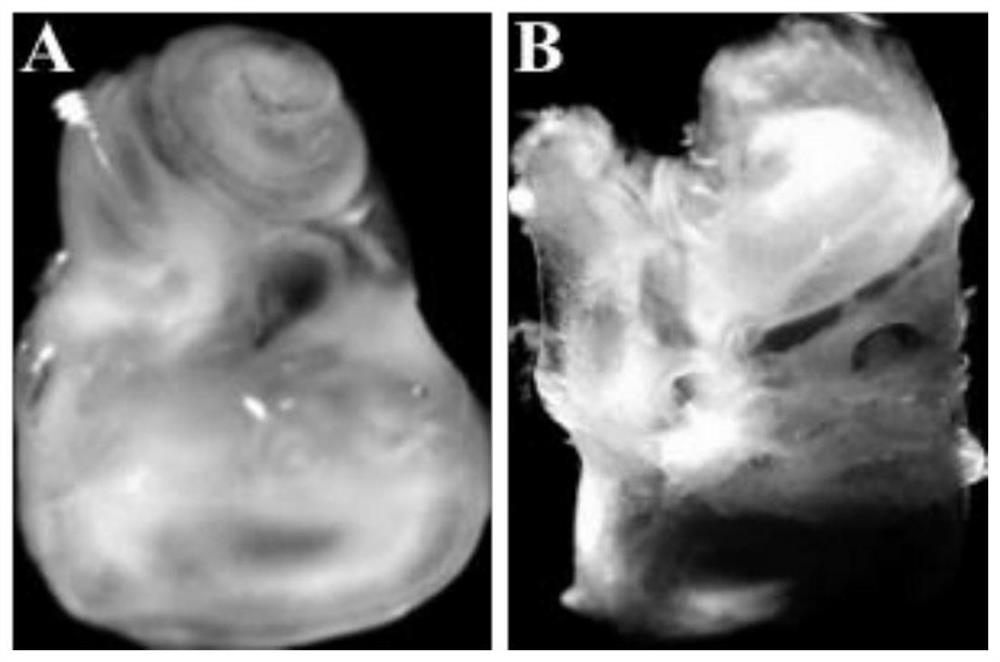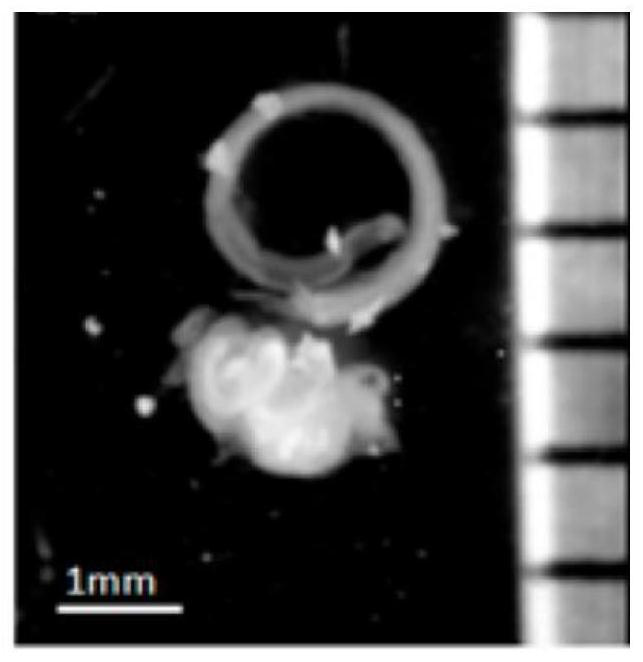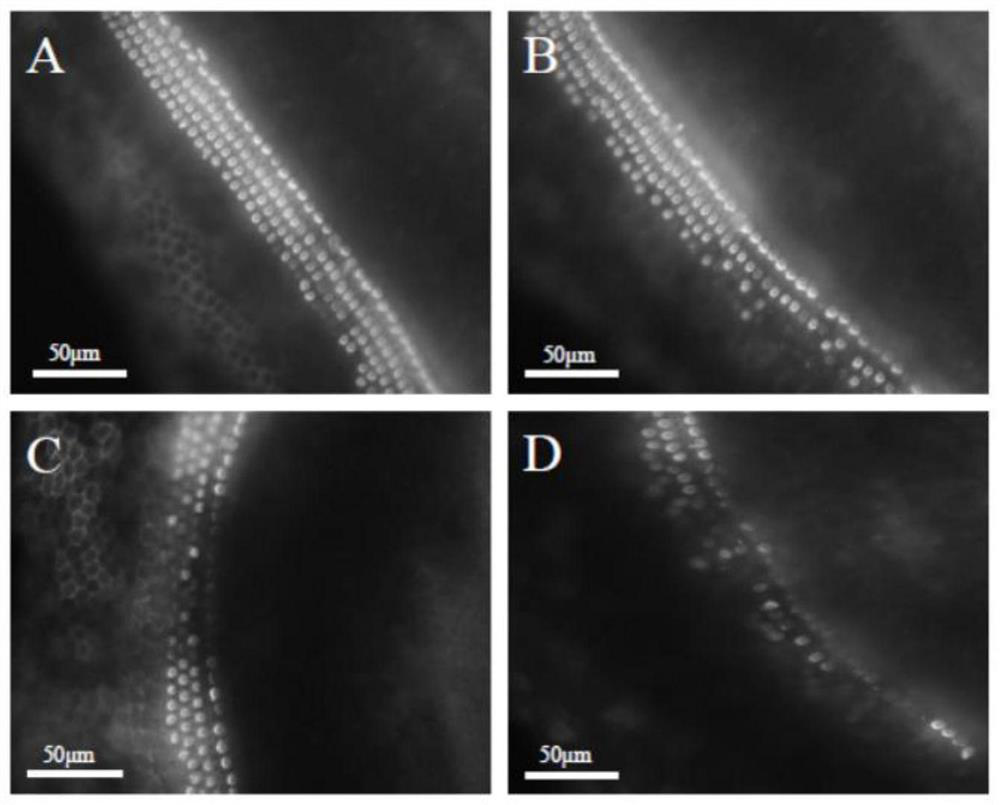A method for in vitro isolation and culture of inner ear hair cells
A technology for the isolation and culture of inner ear hair cells, applied in the field of isolation and in vitro culture of sensory hair cells in the inner ear, can solve the problems of inability to culture hair cells in vitro for a long time, and achieve the effects of prolonged in vitro culture time and obvious growth inhibition
- Summary
- Abstract
- Description
- Claims
- Application Information
AI Technical Summary
Problems solved by technology
Method used
Image
Examples
Embodiment 1
[0018] Example 1 Isolation and in vitro culture of mouse basement membrane hair cells
[0019] 1. C57BL / 6J mice born 3-5 days after birth were used as experimental materials.
[0020] 2. Before dissecting the cochlea, coat the cell culture four-well plate with laminin in advance, and mix laminin (Sigma-Aldrich 114956-81-9), polyornithine (Sigma-Aldrich 27378 -49-0) and fetal bovine serum (Gibco 16000044) were uniformly mixed according to the volume ratio of 2:2:1, and then added 300 μl of the mixture to each well of the four-well plate, and after the sealing film closed the edge of the four-well plate, placed Incubate in an incubator at 37°C for 30min; then remove the coating solution, rinse with 4°C pre-cooled PBS three times for later use; add 250μl inner ear hair cell culture medium to each well of the four-well plate (recipe: high glucose DMEM medium (HyClone SH30243.01) + 5% horse serum (ThermoFisher 16050130) + 5% fetal bovine serum (Gibco 16000044) + 1% N-2 cytokine su...
PUM
 Login to View More
Login to View More Abstract
Description
Claims
Application Information
 Login to View More
Login to View More - R&D
- Intellectual Property
- Life Sciences
- Materials
- Tech Scout
- Unparalleled Data Quality
- Higher Quality Content
- 60% Fewer Hallucinations
Browse by: Latest US Patents, China's latest patents, Technical Efficacy Thesaurus, Application Domain, Technology Topic, Popular Technical Reports.
© 2025 PatSnap. All rights reserved.Legal|Privacy policy|Modern Slavery Act Transparency Statement|Sitemap|About US| Contact US: help@patsnap.com



